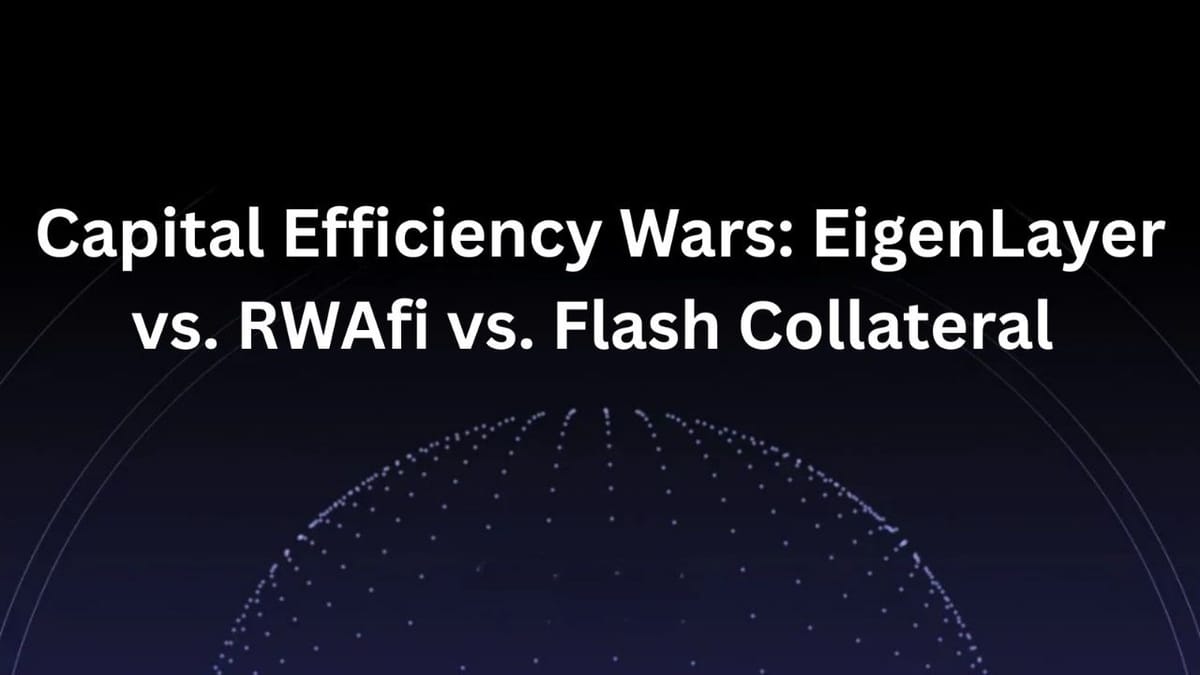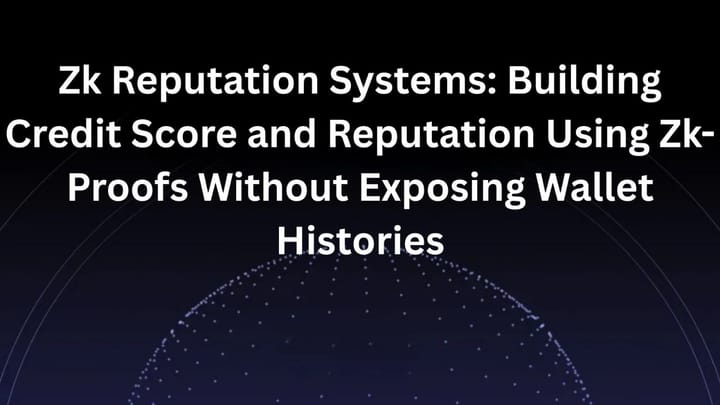Capital Efficiency Wars: EigenLayer vs. RWAfi vs. Flash Collateral

Introduction
The decentralized finance (DeFi) landscape is undergoing a significant transformation as new models of capital efficiency emerge. Among these, EigenLayer, RWAfi, and Flash Collateral are leading the charge, each offering unique approaches to leverage, restaking, and yield abstraction. This article delves into these models, comparing their mechanisms, advantages, and implications for the future of DeFi.
1. Understanding Capital Efficiency in DeFi
Capital efficiency refers to the ability to maximize returns on invested capital while minimizing risk. In DeFi, this concept is crucial as it determines how effectively assets can be utilized to generate yield. Traditional finance has long relied on leverage to enhance returns, but DeFi introduces innovative mechanisms that challenge conventional paradigms.
1.1 Key Concepts
- Leverage: The use of borrowed funds to increase the potential return on investment. In DeFi, leverage can be achieved through various mechanisms, including lending protocols and derivatives.
- Restaking: A process where staked assets are used to secure multiple protocols simultaneously, enhancing capital efficiency without requiring additional capital.
- Yield Abstraction: The practice of separating the generation of yield from the underlying assets, allowing users to optimize their returns without being tied to specific assets.
2. EigenLayer: A New Paradigm for Restaking
2.1 Overview
EigenLayer is a protocol that allows Ethereum validators to restake their assets across multiple applications. By doing so, it enhances capital efficiency and security for DeFi projects. Validators can earn additional yield by providing security to various protocols while still participating in the Ethereum network.
2.2 Mechanism
EigenLayer operates on the principle of "restaking," where staked ETH can be used to secure multiple layers of applications. This is achieved through a smart contract that allows validators to opt-in to provide security for other protocols. The key features include:
- Multi-Application Security: Validators can secure multiple applications without needing to lock additional capital.
- Incentive Alignment: By restaking, validators have a vested interest in the success of the applications they support, aligning incentives across the ecosystem.
- Enhanced Yield: Validators can earn yield from both Ethereum staking and the applications they secure, maximizing their returns.
2.3 Advantages
- Increased Capital Efficiency: By allowing validators to restake, EigenLayer significantly increases the capital efficiency of staked assets.
- Security for New Protocols: New DeFi projects can leverage the security provided by existing validators, reducing the barriers to entry for innovative applications.
- Flexibility: Validators can choose which applications to support, allowing for a more tailored approach to risk and reward.
2.4 Challenges
- Complexity: The restaking mechanism introduces complexity that may deter some users.
- Risk of Slashing: Validators face the risk of slashing if the applications they support misbehave, which could lead to losses.
3. RWAfi: Bridging Real-World Assets and DeFi
3.1 Overview
RWAfi (Real World Asset Finance) focuses on integrating real-world assets (RWAs) into the DeFi ecosystem. By tokenizing physical assets, RWAfi aims to create a bridge between traditional finance and DeFi, enhancing capital efficiency and providing new investment opportunities.
3.2 Mechanism
RWAfi operates by tokenizing real-world assets, such as real estate, commodities, and invoices, and allowing them to be used as collateral in DeFi protocols. The key features include:
- Tokenization of Assets: Physical assets are converted into digital tokens that can be traded and used in DeFi.
- Collateralization: Tokenized RWAs can be used as collateral for loans, enabling users to access liquidity without selling their assets.
- Yield Generation: Users can earn yield on their tokenized assets through various DeFi protocols.
3.3 Advantages
- Access to New Markets: RWAfi opens up new investment opportunities by allowing users to invest in real-world assets through DeFi.
- Enhanced Liquidity: Tokenizing RWAs increases liquidity, enabling users to access funds without liquidating their assets.
- Diversification: Investors can diversify their portfolios by including tokenized RWAs, reducing risk.
3.4 Challenges
- Regulatory Hurdles: The integration of RWAs into DeFi raises regulatory concerns that could impact adoption.
- Valuation Risks: Accurately valuing tokenized RWAs can be challenging, leading to potential risks in collateralization.
4. Flash Collateral: Instant Liquidity Solutions
4.1 Overview
Flash Collateral is a novel approach that allows users to access instant liquidity by leveraging their assets as collateral for short-term loans. This model is particularly useful for traders and investors who need quick access to funds without selling their assets.
4.2 Mechanism
Flash Collateral operates on the principle of flash loans, where users can borrow assets for a very short duration, typically within a single transaction block. The key features include:
- Instant Liquidity: Users can access liquidity instantly without the need for lengthy approval processes.
- No Upfront Collateral: Users can borrow against their assets without needing to provide upfront collateral, as the loan is repaid within the same transaction.
- Flexible Use Cases: Flash loans can be used for various purposes, including arbitrage, collateral swaps, and liquidity provision.
4.3 Advantages
- Speed: Flash Collateral provides instant access to liquidity, making it ideal for traders and investors.
- No Credit Risk: Since loans are repaid within the same transaction, there is no credit risk involved.
- Capital Efficiency: Users can leverage their assets without needing to liquidate them, enhancing capital efficiency.
4.4 Challenges
- Complexity: The mechanics of flash loans can be complex, requiring users to have a good understanding of DeFi protocols.
- Market Volatility: Rapid market changes can impact the feasibility of executing flash loans successfully.
5. Comparative Analysis
1. Capital Efficiency
- EigenLayer enhances capital efficiency through restaking, allowing validators to secure multiple applications without additional capital.
- RWAfi increases capital efficiency by tokenizing RWAs, enabling users to access liquidity without selling their assets.
- Flash Collateral provides instant liquidity, allowing users to leverage their assets without upfront collateral, enhancing capital efficiency in trading.
2. Risk Management
- EigenLayer introduces risks associated with slashing and the complexity of managing multiple applications.
- RWAfi faces regulatory and valuation risks, which could impact the stability of tokenized RWAs.
- Flash Collateral mitigates credit risk but is susceptible to market volatility, which can affect the execution of loans.
3. Yield Generation
- EigenLayer allows validators to earn yield from both Ethereum staking and the applications they support.
- RWAfi enables users to earn yield on tokenized RWAs through various DeFi protocols.
- Flash Collateral does not directly generate yield but provides opportunities for arbitrage and liquidity provision.
6. The Future of DeFi: Rebuilding on Restaking and RWAs
As DeFi continues to evolve, the integration of restaking and RWAs will play a crucial role in shaping the future of the ecosystem. These models offer innovative solutions to enhance capital efficiency, reduce risk, and provide new investment opportunities.
1. The Role of Governance
Governance will be a critical factor in the success of these models. Decentralized governance structures will need to be established to ensure that stakeholders have a say in the development and management of protocols. This will help align incentives and foster collaboration among participants.
2. Regulatory Considerations
As DeFi integrates more closely with traditional finance, regulatory considerations will become increasingly important. Protocols like RWAfi will need to navigate complex regulatory landscapes to ensure compliance while maintaining the benefits of decentralization.
3. Technological Advancements
Technological advancements will also play a significant role in the evolution of DeFi. Innovations in smart contracts, interoperability, and security will enhance the functionality and usability of protocols like EigenLayer, RWAfi, and Flash Collateral.
Conclusion
The capital efficiency wars in DeFi are just beginning, with EigenLayer, RWAfi, and Flash Collateral leading the charge. Each model offers unique advantages and challenges, contributing to the ongoing evolution of the DeFi landscape. As these protocols continue to develop, they will reshape the way users interact with finance, paving the way for a more efficient and inclusive financial ecosystem.


Comments ()